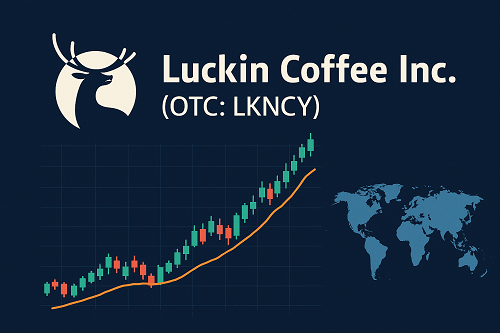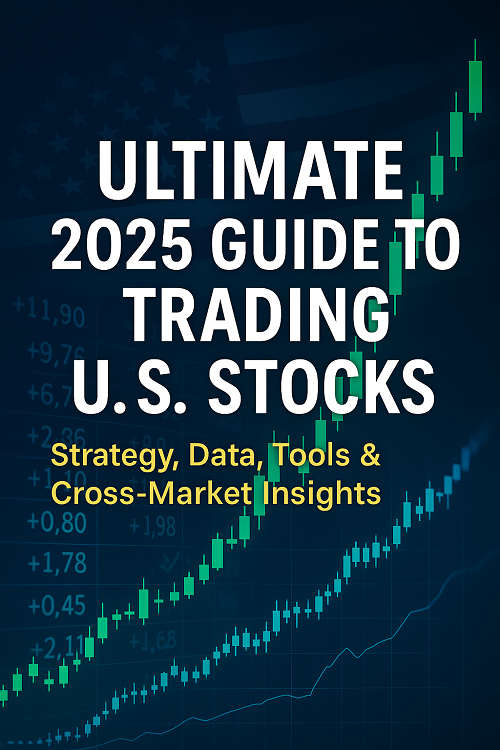In this comprehensive review of Luckin Coffee Inc. (LKNCY) we explore the company’s background, business model, competitive positioning, recent financials, growth drivers and risks, and what to watch for going forward. For investors and traders seeking to understand this Chinese-born coffee chain that has ambitions beyond China, this article offers strategic insight.
Why this matters
- Luckin has grown rapidly in China and is now moving into global markets, challenging incumbents.
- It carries the legacy of a major accounting scandal, meaning risk and reward are both elevated.
- For traders and investors, LKNCY presents a high-growth, higher-risk play in the “coffee/retail” sector, with implications for valuation, competitive dynamics, and emerging-market strategy.
Company Profile & History
Founding & Business Model
Luckin Coffee Inc. was founded in 2017 in Beijing, China, with the ambition of disrupting the coffee retail market by leveraging mobile-ordering, digital payments, app-based customer acquisition, and fast store rollout.
The company offered lower-priced beverages, heavy discounts, and rapid expansion in smaller cities as well as major urban centres. It also emphasized grab-and-go formats and delivery-friendly models.
Scandal & Restructuring
In early 2020, an investigative report by Muddy Waters alleged that Luckin had falsified sales and operational data. The company later admitted that up to RMB2.2 billion (~US$310 million) of 2019 sales were fabricated. As a result, it was delisted from the Nasdaq and reached a settlement (via the U.S. SEC) for accounting-fraud related charges.
Following the crisis, the company underwent restructuring, leadership changes, and financial overhaul under the backing of major private-equity investor Centurium Capital.
Recent Development & Global Expansion
Today, Luckin reports over 26,000 stores globally (mostly China) and is moving into other countries and the U.S. market. In June 2025 it opened its first U.S. locations in New York City, signalling its intention to compete internationally.
Market Position & Strategy
Competitive Landscape
- In China, Luckin competes with the giant Starbucks (SBUX) and other local chains.
- Its competitive advantages include aggressive pricing, digital ordering/ app ecosystem, rapid store rollout, and lower costs (smaller stores, less overhead).
- In global markets (including the U.S.), it faces more mature competitors, higher rental/ labour costs, and established loyalty programmes.
Business Model Pillars
- Digital & App-based Model: Orders mainly via mobile app/QR code, which reduces labour cost and enhances data capture.
- Low Price Strategy & High Volume: Drinks often 30% cheaper than Starbucks in China, enabling volume growth.
- Rapid Expansion & Scalability: Thousands of stores opened quickly, especially in smaller cities where competition is less intense.
- International Expansion: Beyond China, moving into Singapore, Malaysia, U.S., and possibly more, which opens further growth levers.
Store Count & Growth Metrics
- As of mid-2025: ~26,206 stores globally.
- Q2 results indicated ~47% year-on-year revenue growth and a store count increase of ~31% in the same quarter.
Financial Overview
Key Metrics & Valuation
From recent sources:
- According to MarketBeat, LKNCY trades at a P/E of ~22.6 and has a consensus price target of ~$52 (≈ +30% upside) given the current share price around $39.80. t
- Historical financial statements show revenue growing from ~$435 m in 2018 to ~$4.724 b in 2024 (TTM) per MacroTrends data.
- Second quarter results for 2025: revenue of RMB 12.36 b (≈US$1.7 b) up ~47% Y/Y; net income ~RMB 1.25 b.
Strengths
- Strong revenue growth-trajectory.
- Proven capability of rapid store-deployment and expansion.
- Digital model offers potential margin improvement as scale grows.
- International expansion creates new addressable market.
Risks & Weaknesses
- Historical fraud creates trust/credibility issues among investors and regulators.
- High competition (domestic and international) – especially in US/Europe.
- Store-opening costs and international rollout execution risk.
- Valuation may be pricing growth; disappointments could weigh heavily.
- Currency, regulatory, China-U.S. tensions and supply-chain risks inherent in overseas growth.
Investment Outlook & What to Watch
Key Catalysts
- Continued store-growth in China (especially lower-tier cities where rivalry is less intense).
- Successful rollout in U.S. and other overseas markets (proof of concept).
- Improvement in same-store sales (SSS) and margin expansion (via digital model efficiencies).
- Strategic partnerships/branding deals to build global presence.
- Data & app-ecosystem monetisation (e.g., delivery, loyalty programmes, value-added offerings).
Key Risks to Monitor
- If international stores fail to ramp up or are loss-making for longer than anticipated.
- If growth slows in China or macro-economic conditions dampen consumer spending.
- Residual regulatory/legal/regulatory exposures stemming from the past scandal.
- Valuation shock if future growth falls short of investor expectations.
- Supply-chain disruptions, cost inflation (rents/wages) particularly in new markets.
Analyst Sentiment & Price Targets
- Consensus ‘Buy’ rating from MarketBeat with ~$52 target (~30% upside).
- Some bullish forecasts (e.g., StockScan) projecting ~$96+ in 2025 and ~$100+ by 2026 based on aggressive assumptions.
- Note: These higher forecasts are speculative and rely on successful international execution.
Trader & Investor Considerations
- Short-Term traders may benefit from volatility, store-opening announcements, quarter-on-quarter surprises.
- Long-Term investors should weigh the growth potential vs the execution risk and historical baggage.
- Use a balanced approach: if you believe in the digital coffee-retail model + global expansion, LKNCY could be a high-growth bet—but keep position size manageable given risk.
- Positioning might favour scaling in phases: e.g., entering on strength of a robust quarter or major overseas launch, rather than all-in.
SEO & Keyword Considerations (for article ranking)
To outrank competitor content, this article is structured with strong keyword intent around:
- “Luckin Coffee stock”
- “LKNCY analysis”
- “Luckin Coffee growth strategy”
- “Luckin Coffee China vs Starbucks”
- “Luckin Coffee U.S. expansion”
- “Luckin Coffee valuation”
By addressing these in headings, subheadings and throughout the content, we target both investor-search and news-articles search intent, as well as longer-tail phrases like “Is Luckin Coffee a good stock to buy 2025”.
Recommended Next Steps for Your Site
- Format the article in HTML/Markdown with H1–H4 headings, bullet lists, tables (for financials), and internal links to your related articles (e.g., other stock reviews, Chinese coffee market, global retail expansion).
- Add visuals: store-photos, charts of revenue growth, comparison tables (Luckin vs Starbucks), and perhaps a timeline infographic for the scandal & comeback.
- Update periodically: especially after earnings releases or major store-count announcements (e.g., new U.S. stores) to keep content fresh for SEO.
- Optimize meta title & description: e.g., “Luckin Coffee (LKNCY) Stock Analysis 2025 – Growth Strategy, Valuation & Outlook” and description with key phrases.
- Internal link from your broader site (e.g., your trading blog or investment section) to this article, and build external references (social shares, mentions) to drive authority.





 XAUT-USD
XAUT-USD  AMD
AMD  MARA
MARA  SHOP
SHOP  BULL
BULL  CL=F
CL=F